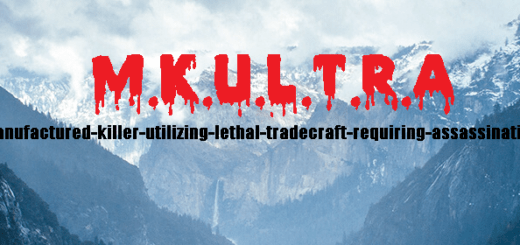EDITORIAL
Obama Is a Failure
The World Needs a New Financial Architecture Now!
Aug. 26 (EIRNS)—Obama must be ousted, regardless of how much time is left, if there is to be any functioning New Presidency in the United States during the period ahead. His Presidency has been a failure, one which is wreaking havoc, death, and chaos on the United States and the world through illegal wars, bailouts, drone attacks, the destruction of healthcare, drug-related deaths, unemployment, and Obama’s personal psychotic pathology.
It is the ongoing collaboration between the leadership of Russia and China on a new economic system and urgent structural changes to the global financial system, which is of the utmost importance. This is the critical flank to avoid nuclear world war and financial chaos—the results of Obama’s failed Presidency—and this is the leading topic of discussion among world leaders during the many international summits over the months of September and October.
President Xi Jinping of China intends to put the critical issue of a new world economic and financial system on the agenda of the upcoming G20 Summit in Hangzhou, China. The official China media, joined by top Russian analysts, have made clear that any such new and viable system must include the United States—which means that the United States must abandon its delusions of ruling a unipolar world, and begin collaborating with major nations for a new and just economic system.
This was highlighted in an Aug. 24th wire of China’s official Xinhua news agency, titled “Interview: Russia, China Should Cooperate Within G20 To Tackle Challenges.” Andrey Kortunov, the Director General of the Russian International Affairs Council, which is close to the Russian Foreign Ministry, said “The longer those reforms are postponed, the higher the risk of new crises and instability in the world economy.” He added later, “Both Russia and China should consistently seek common ground with Washington, and avoid crises, without making concessions on matters of principle.”
A Xinhua commentary on the same day, also regarding the G20, assailed “over-reliance on monetary policy” and the focus on “markets” as opposed to “nations”—at the expense of policies aiming for real physical-economic growth, and based on technological innovation.
The Wall Street Journal has suggested that it was at the request of China, that the Bank for International Settlements issued a recent report warning that there are no mechanisms in place at this time which can prevent a blow-out of the $600 trillion-plus global financial derivatives bubble, if any major party defaults. Business Insider, in what could be described as a painful understatement, was forced to admit that the results of this survey “are slightly terrifying,” because if derivatives clearing-houses fail to handle a crisis, then derivatives become “unexploded nuclear bombs nestling deep in the financial system.” The Journal notes that China has placed the safety of central clearinghouses “high on the agenda” of the upcoming G20 summit.
There is now an increasing and widespread belief among top officials of the trans-Atlantic region, that Europe and the United States are on the very edge of a financial blowout, whose magnitude is equalled only by their own denial both of its global consequences, and of the collapse of western dominance. Bloomberg reported Tuesday, Aug. 23, that Deutsche Bank, Barclays and Credit Suisse are sitting on a combined $102.5 billion in “Level 3” assets,— i.e. assets which are illiquid, without market value, and which cannot be dumped in a crisis.
With the entire political and financial class of the west increasingly discredited, the only remaining option is the immediate reinstatement of Glass-Steagall full bank separation in the United States, and identical implementation throughout Europe. Glass-Steagall, followed by a jubilee debt write-off for the developing nations and the extension of long-term credit for industrial and scientific development, are just some of the first, indispensable steps towards the creation of a new global financial architecture, and are the prerequisites for a new cultural paradigm, a new Renaissance for all mankind.
The foundations for such a new global financial and economic architecture are now well-established through the growing integration of Eurasia, being woven through cooperation among the Eurasian Economic Union, the Shanghai Cooperation Organization, the BRICS, ASEAN, and other groupings. It is China’s “One Belt, One Road” initiative, based on Lyndon and Helga LaRouche’s original mid-1990s concept of the Eurasian Land-Bridge, which is the principle upon which this Eurasian and potentially global development is premised.
THE NEW GLOBAL ECONOMIC ORDER
Ringing Endorsement of China G20 Thrust by Russia Business Leader
Aug. 28 (EIRNS)—“The efforts of the organizers of the summit and the work under the chairmanship of China, leave no doubt that the most relevant and well worked-out issues will be submitted for consideration at the G20,—answers that will determine the future agenda, not only in the economic but also in the social and humanitarian spheres,” Kirill Dmitriev, CEO and Chairman of the Russian Direct Investment Fund (RDIF), told China’s news agency Xinhua today.
Dmitriev said that responsibility for stability and growth is a major component of China’s contribution in a global context, and an example for many countries.
Investment cooperation, to which China contributes greatly, plays a special role, Dmitriev said, adding that Russia and China have the same understanding of the majority of the agenda items. “The two countries believe that there should be no barriers for the flows of investment capital, and they see considerable potential in the joint implementation of infrastructure projects, especially cross-border projects,” he noted.
He named the construction of the first cross-border railway bridge across the Amur River, which will significantly reduce the costs of transportation, as one example of such cooperation. Currently, the financing and construction of the Russian part of it are underway, Dmitriev said. The intergovernmental Russia-China Commission for Investment Cooperation is currently considering 66 projects for a total value of $100 billion he said.
“Our Chinese partners have a long-term vision and a systemic approach to the settlement of problems. This includes a clear understanding of companies’ strategic interests, of national interests and tactical capabilities,” Dmitriev said.
The Russian Direct Investment Fund is the country’s sovereign wealth fund.
First Cargo Train from China on Its Way to Afghanistan, as China Seeks To Help Achieve Afghan Peace
Aug. 28 (EIRNS) — The first cargo train from China is set to reach Afghanistan Sept. 9, signalling Beijing’s effort to consolidate ties with Kabul, as part of the One Belt, One Road (OBOR) initiative along the ancient Silk Road. The train left China’s eastern city of Nantong on Aug. 25, to cover a 15-day journey to Hairatan, on Afghanistan’s border with Uzbekistan. On the way, it will cross the Alataw Pass on the China-Kazakhstan border, before heading into Uzbekistan towards Termez. From Termez, branch lines also head towards Dushanbe, the capital of Tajikistan towards the east, and westwards to Uzbekistan’s cultural icons of Samarkand and Bukhara. From Uzbekistan the train proceeds to Afghanistan, crossing the famous Friendship Bridge, which was built by the Soviets on the Amu Darya, and which had also served as the crossing for supplies coming from Russia to U.S. troops serving in Afghanistan.
The railway has subsequently been extended by 75 km from Hairatan to Mazar-e-Sharif, the third largest city of Afghanistan, and capital of its Balkh province.
Observers note that the creation of this rail line indicates China’s interest in playing a role in achieving peace in Afghanistan. A report in the Indian daily The Hindu today quotes Hu Shisheng, Director of the Institute of South and Southeast Asian and Oceania Studies at the China Institutes of Contemporary International Relations, as saying, “China is ultimately keen to see a political settlement, though we know that this is very hard to achieve because different countries pursue different interests. Besides, the Afghan Taliban still believe that they can win the battle through military means. Anyway, what China can do at this stage is to understand the ground realities.” Earlier this month, there had been talks between the Chinese and Afghan military officials. Talks on Afghanistan have been ongoing for sometime between Chinese and U.S. officials.
Russia Is World’s Top Wheat Exporter, Say Russian Media and USDA
Aug. 26 (EIRNS)—“With its wheat exports for this year and next projected at a record 30 million tons, Russia has edged past its main competitors, the EU and the U.S., to become the world’s top exporter of this staple crop, business magazine Expert wrote,” reported Sputnik today.
Not only have the exports increased, but production has been steadily increasing as part of “the government’s effort to revive the country’s agriculture sector,” Sputnik said, with investments from both the state and leading companies since the post-Ukraine putsch sanctions were imposed on Russia in late 2014. In June this year, it was also reported that Russia had become the world’s leading wheat producer, surpassing the United States and Canada with close to 65 million tons of wheat harvested.
Mexico, which has traditionally relied on wheat from the United States, is now buying Russian wheat, as are Algeria and Morocco, which are both traditional buyers from France. Among the “list of new buyers,” are Mali, Malta and Burma. “According to information provided by Grain Quality Service state-owned company, Russia will export wheat also to Indonesia, until now the biggest buyer of Australian wheat, as well as traditional clients as Egypt, Bangladesh and Mozambique,” Sputnik added.
And, according to the U.S. Department of Agriculture (USDA) this expansion is projected to continue. On Aug. 12th, the USDA reported on the world trade in wheat, that “Global trade is raised [by] 2.3 million tons on larger global supplies. Russia exports are raised 4.5 million tons to a record 30.0 million [for this year]…. Russia is projected to be the world’s largest wheat exporter for the first time.” And, in the USDA’s Foreign Agricultural Service report for August 2016, Russia is projected to export 35 million tons for the 2016-17 season.
This record-breaking wheat production was not unplanned, and major expansion into Asia is a key component. In May, Russia’s Agriculture Minister Alexander Tkachev told journalists at the SIAL China food trade show exhibition in Shanghai, “Markets, both new and old, are opening for us. Of course, this is traditionally the Chinese market and we’re currently working on that. This is, of course, both Japan and South Korea, as well as North America, the Arab world, and the Persian Gulf.” He announced planned increases in exports of meat to China, and of increased soy sales to Japan.
Russia’s wheat achievement is all the more notable coming under the regime of the West’s self-damaging sanctions against it. In the first quarter of 2014, Choices magazine, the publication of the Agriculture and Applied Economic Association had reported that in 2013, Russia’s agricultural and food imports totaled $39 billion, while its food exports were only $14 billion. And food imports from the European Union constituted 40% of all of Russia’s imports in 2013, the magazine said.
COLLAPSING WESTERN FINANCIAL SYSTEM
Why China Insists a G20 Growth Commitment Is Urgent
Aug. 26 (EIRNS)—In early July, China’s Finance Minister Lou Juwei and Commerce Minister Gao Hucheng characterized the condition of the world economy as “grim,” and said that it was incumbent on the G20 nations, as a whole, to take coordinated action to increase investment in both new infrastructure and increased consumption, to restore growth to most of the world’s economy.
Clearly they referred, though by diplomatic inference, to the prostrate economies of Europe, and also to the U.S. economic recovery of which Barack Obama waxes so arrogantly proud.
In the years 1934-35, under the impulse of President Franklin Roosevelt’s policies of recovery from the depth of the Great Depression, the U.S. economy — as now calculated — grew by 10%each year.
In the years 2008-2016, under the impulse of President Barack Obama’s policies of recovery from the depth of the “Great Recession,” the U.S. economy responded quite differently.
Here are average, annual U.S. economic growth rates over 10-year periods since World War II.
1948-57: 3.80%
1958-67: 4.28%
1968-77: 3.18%
1978-87: 3.15%
1988-97: 3.05%
1998-07: 2.99%
2008-16: 1.1%
The “Obama growth” since 2008 is 8.4% combined over full two terms as President, less than FDR accomplished in each of his first two years as President. (The European Union’s average annual growth rate during those years has been 0.6%.)
Youth Unemployment Worsened Planet-Wide in 2016
Aug. 27 (EIRNS)—The International Labor Organization (ILO) has just published a report which states that the official unemployment rate for 15- to 24-year-olds globally stands at 13.1%, up from 12.9% in 2015. Some regions are doing far worse, the ILO explained, such as the Arab world, where youth unemployment stands at 30.6%.
The ILO report quotes Deborah Greenfield, the institution’s Deputy Director-General for Policy, saying that the global number of unemployed youth would rise by half a million in 2016, to reach 71 million. She continued, “Of greater concern, is the share and number of young people, often in emerging and developing countries, who live in extreme or moderate poverty in spite of having a job. In fact, 156 million or 37.7% of working youth are in extreme or moderate poverty, as compared with 26% of working adults. The alarming rise in youth unemployment and the equally disturbing high levels of youths who still live in poverty, show how difficult it will be to end poverty globally by 2030.”
The ILO defines extreme poverty as having an income of less than $1.90 a day; moderate poverty means making under $3.10 a day.
The ILO report also quotes Steven Tobin, ILO Senior Economist, as saying that the labor force participation rate for young men stood at 53.9% as compared with 37.3% for young women. Tobin, who is the lead author of the report, said the disparity between young men and young women represented a gap of 16.6%. Tobin was of the view: “The challenge is particularly acute in Southern Asia, Arab states and Northern Africa, where female youth participation rates are respectively, 32.9%, 32.3% and 30.2% lower than those of male youth in 2016.”
U.S. POLITICAL AND ECONOMIC
Obamacare Explodes: Premiums Skyrocket and Insurers Still Opt Out
Aug. 26 (EIRNS) — “Obamacare” visibly failing across the United States and provoking a backlash against the President. Patients’ health insurance premiums are rising rapidly while many big insurers are leaving the state Health Exchanges because they are not profitable enough — even with 77% average premium increases over the six years of Obamacare, according to the Kaiser Family Foundation.
Steep premium increases are being demanded — and granted by state insurance commissioners — all over the country; e.g., Washington, D.C. daily, The Hill reports that Tennessee Insurance Commissioner Julie Mix McPeak announced this week the approval of premium hikes of 62%, 46% and 44% for the three insurers on the state’s marketplace. The Hill also reports, “An early estimate from Obamacare analyst Charles Gaba finds that for nine states the average approved premium increase for next year is 27.6%.” Some 15-20% of users will actually pay this increase; for the others, government will pay it.
Even with these hikes, insurers have pulled out of five states, and left them with only one insurer.
Obamacare has become a major factor in U.S. Senate races,Politico reports: “In nine of 11 states with competitive Senate races, at least one insurer seeks to hike rates for Obamacare customers by at least 30% next year: Highmark Blue Cross Blue Shield in Pennsylvania wants to jack up average premiums by more than 40%…. In Wisconsin, three insurers have asked for rate hikes of more than 30%. In New Hampshire, two of the five carriers want to sell plans with a rate increase above 30%.”
Obamacare is taking a fundamental toll on the living standards of middle-class Americans. A new Brookings Institution study of Labor Department data, publicized in today’s Wall Street Journal, finds that middle-class households have gone from spending 6.9% of their total pre-tax income on healthcare in 2007, to spending 8.9% of it in 2014; and clearly, a larger share than that in 2016 and 2017. These households have necessarily reduced spending on every other basic need — food, transportation, housing, clothing — to pay healthcare premiums, deductibles, copays, etc.
STRATEGIC WAR DANGER
UN Reports on Saudi Crimes in Yemen
Aug. 26 (EIRNS)—Airstrikes by the Saudi-led coalition are responsible for “the single largest part,” some 60%, of the 3,799 civilians killed since March 2015, and it has committed other violations that may contravene international law, according to a report issued by the UN High Commission for Human Rights. “The compensation of the victims is an important element but it is not the only element. We think there should be a kind of accountability, and these violations not to be repeated again,” said Mohammad Ali Alnsour, chief of the Middle East and North Africa section of the Office of the High Commissioner for Human Rights (OHCHR) in Geneva.
According to the New York Times, the report also cited the use of cluster munitions by Saudi-led coalition forces in residential areas, a “delicate issue” for the United States and Britain, which have supplied billions of dollars of arms and munitions to Saudi Arabia and which have worked with the coalition on its targetting. “The resilience of the Yemeni people has been stretched beyond human limits,” the report said. Other nations have “a legal and moral duty to take urgent steps to alleviate the appalling levels of human despair” and to ensure accountability for abuses.
SCIENCE AND INFRASTRUCTURE
Popular Science on ‘China’s Race to Space Domination’
Aug. 27 (EIRNS) — This is the title, in English and in Chinese, of an article in the September-October issue of Popular Science magazine, with the subtitle “Let’s Go To the Moon,”—also in English and Chinese—by Clay Dillow, Jeffrey Lin and P.W. Singer. The article begins, paraphrasing John F. Kennedy, “Before this decade is out, humanity will go where it’s never gone before: the far side of the Moon.” “The mission will be a marvel of engineering. It will involve a rocket that weighs hundreds of tons (traveling almost 250,000 miles), a robot lander, and an unmanned lunar rover that will use sensors, cameras, and an infrared spectrometer to uncover billion-year secrets from the soil. The mission also might scout the Moon’s supply of helium-3, a promising material for fusion energy. And the nation planting its starry flag on this historic trip will be the People’s Republic of China.”
The two-page article then goes through some of the history of the Chinese space program, from Qian Xuesen’s self-imposed exile from his house arrest in California back to his native China, laying there the basis for the future of China in space. It then relates the stages of the program up until the recent planned lunar mission, noting the fact that China is inviting other nations to participate with them in space. The article notes China’s recent success in sending up the quantum satellite, thus ensuring secure communications.
The authors note the U.S. Congress’ ban on space cooperation with China on the manned program, but that other countries are free and eager to cooperate with China. “After all, if the U.S. and co-owners shutter the expiring International Space Station in 2024 as planned, China will be the only country up there,” they write. While this has raised concerns in U.S. defense circles, the authors say that there is another way to approach this development. “Just as in the Cold War, there is also the possibility that space activities could yield more peace, not less. As China’s military and civilian dependence on space begins to mirror that of America’s, the hazard-filled nature of space operations creates an incentive for both nations — along with other space actors — to maintain at least an uneasy cooperation. Global reliance on the space-based communications and navigation that power our digital age means that America and China will have to work together to draw up the rules for the crowded space age.”
OTHER
Bolivian Minister Killed; President Morales Charges Coup Attempt
Aug. 27 (EIRNS) — The brutal Aug. 25 murder of Bolivia’s Deputy Interior Minister Rodolfo Illanes, by a group of striking miners, has brought to light the sordid details of what President Evo Morales correctly identified in a press conference today as a foreign-directed coup attempt against him. A leader who has firmly allied with the BRICS nations, particularly Russia and China, Morales is perceived by London and Wall Street as the next Ibero-American head of state to be overthrown, given his success in developing his country and his plans to invest in advanced technologies such as nuclear fission and fusion.
Illanes was kidnapped, tortured and murdered after he approached striking miners from the National Federation of Mining Cooperatives (Fencomin), who had been blocking the La Paz-Oruro highway for several days. Interior Minister Carlos Romero told the Cadena-A TV station that miners had told Illanes they were ready to negotiate, but in fact were filling trenches with explosives “to destabilize.” When a phony media report was circulated that police had killed a miner, drunken miners took Illanes, beat him to death and left his body on the highway.
Speaking from Cochabamba today, Morales announced that his government is reviewing documents on the coup attempt. There are many suspicious acts under investigation, all of which exacerbated the situation, including suspicious deaths of miners and policemen. The miners’ strike was political, Morales said, linked to right-wing forces seeking to privatize the mining sector and sabotage the government’s ambitious plans to industrialize its natural resources.
The same Project Democracy apparatus behind Brazil’s destabilization is very actively deployed in Bolivia, and has been for years. At the center is the infamous National Endowment for Democracy (NED), and numerous “pro-democracy” non-governmental organizations generously financed by the NED and its various offshoots, such as the International Republican Institute (IRI) and the National Democratic Institute (NDI). Also included in the Project Democracy stable is the right-wing Inter-American Institute for Democracy (IID), which in October 2015 published a detailed “Strategic Plan for Bolivia,” proposing, among other things, how to foment social unrest by “maintaining and increasing denunciations of corruption and directly blaming the government for supposed … negligence in combatting it.”















